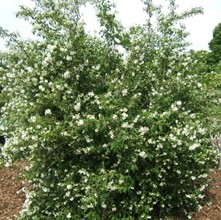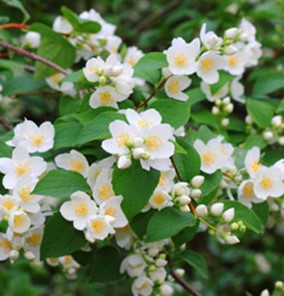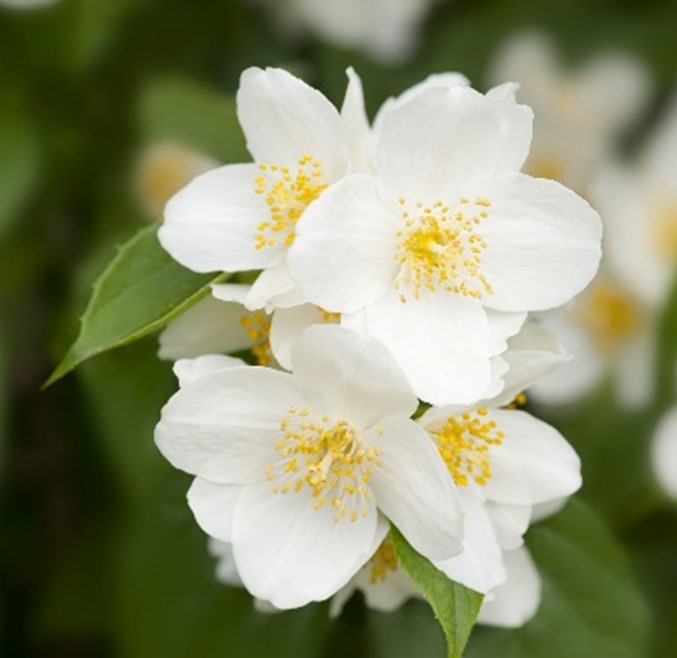Mock Orange
Philadelphus coronarius



Characteristics
- Type: Shrub
- Zone: 4 – 8
- Height: 10 – 12 Feet
- Spread: 10 – 12 Feet
- Bloom Time: Spring
- Bloom Description: White Flowers
- Sun: Full Sun – Part Shade
- Water: Medium
- Maintenance: Low
- Suggested Use: Hedge
- Flower: Showy, Fragrant
- Attracts: Butterflies
- Tolerates: Deer, Clay Soil
Culture
Mock Orange is easily grown in average, medium moisture, well-drained soils in full sun to light shade. Prefers moist, organically rich soils. Tolerates a wide range of soils except poorly-drained ones. Flowers of the Mock Orange appear on the prior year’s growth, so prune as needed immediately after flowering.
Noteworthy Characteristics
Philadelphus coronarius, commonly called Mock Orange is a dense, rounded, multi-stemmed, suckering, deciduous shrub with stiff, straight, ascending but arching branches. It typically matures to 10-12’ tall and as wide. It is native to southeastern Europe and Asia Minor. It is grown in landscapes primarily for its 4-petaled, very fragrant, white flowers (each to 1 1/2” across) which bloom abundantly in May to early June in small clusters (5 to 7- flowered racemes). Each flower purportedly resembles the shape of an orange blossom, hence the common name of mock orange. Flowers give way to seed capsules. Dark brown bark exfoliates with age. Genus name comes from the Greek word philadelphus meaning loving one’s brother or sister. A Grecian and Roman family name. New York Botanical Garden suggests that the genus name instead comes from Ptolemy Philadelphus, a king of the third century B.C.
Problems
Some susceptibility to leaf spot, canker, powdery mildew and rust. Aphids, nematodes, scale and leaf miners are occasional visitors. Deer tend to avoid this plant.
Garden Uses
Foundation plantings, hedges, cottage gardens, shrub borders or low screens. This shrub has minimal ornamental interest when not in flower.
Courtesy of Missouri Botanical Society Plant Finder